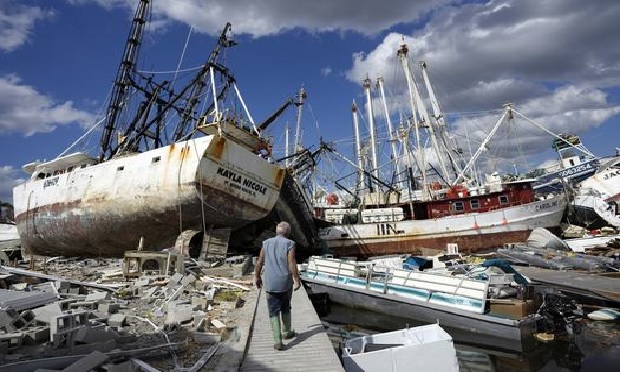 Bruce Hickey, 70, walks along the waterfront, now littered with debris including shrimp boats, in the mobile home park where he and his wife, Kathy, have a winter home on San Carlos Island, Fort Myers Beach, Fla., on Oct. 5, 2022, one week after the passage of Hurricane Ian. (Photo: Rebecca Blackwell/AP)
Bruce Hickey, 70, walks along the waterfront, now littered with debris including shrimp boats, in the mobile home park where he and his wife, Kathy, have a winter home on San Carlos Island, Fort Myers Beach, Fla., on Oct. 5, 2022, one week after the passage of Hurricane Ian. (Photo: Rebecca Blackwell/AP)
On September 28, 2022, Hurricane Ian made landfall on the west coast of Florida near Fort Myers Beach as a Category 4 storm. Ian was estimated to be almost 500 miles wide, with an eye 40 miles across and sustained winds of 150 mph at landfall. In Florida alone, over 708,255 first-party property claims have been reported with reserves reaching almost $14 billion. In addition to delivering strong winds, this storm also slammed Florida with a catastrophic storm surge
Recommended For You
Want to continue reading?
Become a Free PropertyCasualty360 Digital Reader
Your access to unlimited PropertyCasualty360 content isn’t changing.
Once you are an ALM digital member, you’ll receive:
- Breaking insurance news and analysis, on-site and via our newsletters and custom alerts
- Weekly Insurance Speak podcast featuring exclusive interviews with industry leaders
- Educational webcasts, white papers, and ebooks from industry thought leaders
- Critical converage of the employee benefits and financial advisory markets on our other ALM sites, BenefitsPRO and ThinkAdvisor
Already have an account? Sign In Now
© 2025 ALM Global, LLC, All Rights Reserved. Request academic re-use from www.copyright.com. All other uses, submit a request to [email protected]. For more information visit Asset & Logo Licensing.





